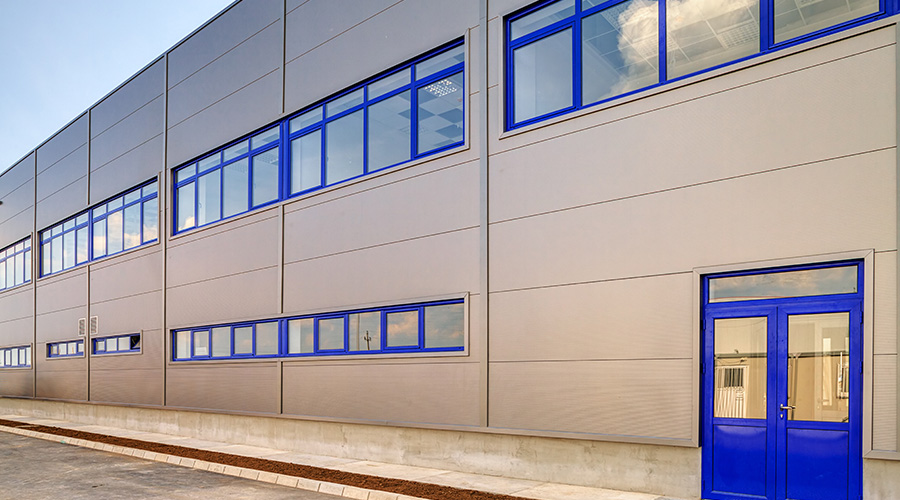Standards for Suppliers Help Ensure Green Product Selection
Facility managers have probably heard of the now-famous Walmart supplier questionnaire — a document the company sends to all its potential vendors asking about their own sustainable practices. That idea is becoming more popular for facility managers creating criteria for building products. Gregory says that in his former life as director of sustainability for a carpet manufacturer, he noticed that the practice of facility managers examining a vendor's own sustainable practices is increasing quickly. This represents a third tier of how facility managers should develop environmental criteria for their building products.
"Simply put, you can't get a green product from a brown vendor," says Hartridge-Beam.
Levin agrees: "Manufacturer performance is important. It indicates manufacturers care about environmental stewardship." One of the reasons facility managers should take note of manufacturers' performance is that it could affect their own carbon footprints. Scope 3 emissions are calculated in part via the components of a facility's supply chain, and so organizations now interested in determining their own carbon footprints will rely on their facility managers to lessen the impact of building products coming in. That information comes from vetting manufacturers ahead of time before buying their building products.
Other questions facility managers should consider asking of vendors include electricity and water use per pound of product, the history of both (are they improving?), renewable energy used, other types of energy used (like methane or natural gas), waste and recycling rates, shipping and packaging methods, whether a vendor's own facilities or operations have received environmental certifications like LEED or ISO 14001, and raw materials used and how they were extracted. Facility managers often pick and choose which of these questions are important, based on their priorities and the priorities of their organizations.
However, taken together, all of these factors, including determining the environmental impacts of raw materials separately and also how they come together to create the finished product, are what constitute a holistic environmental life-cycle assessment (LCA) of a product. Despite the increase in tools available (Pharos, Athena, BEES, etc.), environmental LCAs still aren't a widespread practice, and Gregory says he thinks LCAs becoming more en vogue is still a good three to five years out. Even so, Levin says that the U.S. Green Building Council may include some LCA-based credits targeting Environmentally Preferable Products and Environmental Product Declarations in the next iteration of LEED, which is due out next year. (See "Looking Forward To LEED 2012" below.)
Start of Something Big?
"There's a beginning of a trend toward doing LCAs," says Levin. "But it's still very expensive and time-consuming for manufacturers. The LCA process really needs a standardized and steady flow of information so that manufacturers can prove and document why their products really are green."
Gregory says part of the problem is that there are several different databases that house the data on the environmental impacts of raw materials, so manufacturers will choose the version that shows their raw materials with the least impact. The solution, he says, is that all manufacturers of similar products need to use the same database and calculation, so facility managers know they're getting fair information on impacts.
Making sure to get fair and accurate information, and therefore getting products that are as green as they're purported to be, is really what the idea of creating environmental standards based on particular criteria amounts to.
"You still have to get through the marketing rhetoric in many cases," says Gregory. And you still have to be diligent that you're following through and actually purchasing materials as your specifications and standards indicate you should. Berman, who helps manage a school system with 18,000 employees and 649 buildings encompassing nearly 21 million square feet of space, knows this better than most.
"Just having a policy is not going to get you the results you expect," he says. Facility managers should regularly examine both their standards and how they're following through on purchasing to those standards, say experts, no matter what tier or level of sophistication they're at in terms of defining environmental criteria.
SHIFTING STANDARDS
Looking Forward To LEED 2012
Next year, the U.S. Green Building Council will release new versions of its signature LEED rating systems, and facility managers can expect several product-related changes.
One of the more momentous changes, according to Rick Levin, a member of the Materials and Resources Technical Advisory Group, is that credits will be revamped so that they're based on a weighting system. While the details are still being fleshed out, Levin says the weighting system will be based on the relative importance across seven new impact categories, including climate, health, water, biodiversity, resources, transformative processes/green economy and community. The weighting system will be based on the following three criteria: 1) relative efficacy, or whether a component or product is "stronger, weaker or counterproductive" than similar; 2) durability; and 3) benefit duration and control, or who controls the outcomes resulting from the installed product.
The current LEED 2009 product credits are based on the EPA's Tool for the Reduction and Assessment of Chemical and other environmental Impacts (TRACI). This tool, says Levin, only looks at negative impacts. USGBC has decided it wants to accentuate the positive, instead. A user will complete a scorecard that gives higher weight to materials that use benign materials, says Levin.
— Greg Zimmerman
|
Related Topics:













